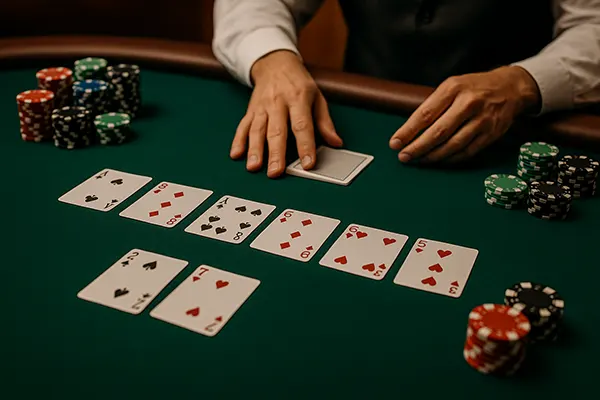
Unusual Poker Variants: Lowball, Omaha Hi-Lo, Badugi, Pineapple and Their Strategic Features
Poker’s diversity extends far beyond the classic Texas Hold’em, offering formats that challenge players with unique rules and strategic layers. Among these, Lowball, Omaha Hi-Lo, Badugi, and Pineapple stand out for their unconventional gameplay and tactical demands. Understanding their intricacies not only broadens a player’s skills but also sharpens adaptability across different table dynamics. In 2025, these games continue to attract enthusiasts seeking fresh challenges and deeper decision-making complexity.
Lowball Poker and Its Strategic Depth
Lowball reverses traditional hand rankings, rewarding the lowest possible hand instead of the highest. The most common formats are Ace-to-Five and Deuce-to-Seven, each with distinct hand value systems. For example, in Ace-to-Five, straights and flushes do not count against a low hand, while in Deuce-to-Seven, they do, making 7-5-4-3-2 the strongest possible hand.
Strategically, Lowball demands a complete mental shift. Players accustomed to chasing high hands must instead focus on avoiding high cards and pairs. Bluffing takes a nuanced form, as opponents may fold to a perceived stronger low, especially in draw variants where discarded cards remain unknown to others.
Position is equally critical. Acting later allows players to react to opponents’ drawing behaviour, gaining valuable reads on whether they have improved. In high-stakes Lowball, experienced players blend hand selection discipline with well-timed aggression, especially when opponents show weakness in their draw patterns.
Psychological and Tactical Adjustments in Lowball
Shifting from high-hand formats to Lowball requires a recalibration of instincts. Hands like a pair of aces, powerful in Hold’em, become liabilities. The mindset revolves around constructing the lowest unpaired hand while managing the odds of improvement versus the risk of being counterfeited.
Observation plays a bigger role than raw card strength. Noticing how many cards opponents draw can signal hand strength and inform betting decisions. Against tight players who rarely draw more than one card, slow-playing mediocre lows can be dangerous.
Advanced players also manipulate table image to create misleading reads. By occasionally standing pat (keeping all cards) with a less-than-optimal low, they can induce folds from opponents who assume unbeatable strength, adding a psychological edge to mathematical play.
Omaha Hi-Lo and Split-Pot Complexity
Omaha Hi-Lo, also called Omaha Eight or Better, splits the pot between the best high hand and the best qualifying low hand (eight or lower). Players receive four hole cards and must use exactly two with three from the board, leading to intricate hand combinations and frequent split pots.
The dual-objective nature creates unique strategic opportunities. Targeting “scoops” — winning both the high and low — yields maximum profit, but overcommitting to one side of the pot can be costly. For example, a hand like A-2 suited with connected high cards offers both nut low potential and strong high possibilities.
Pot-limit betting intensifies decision-making, as larger pots amplify the cost of chasing marginal draws. Disciplined starting hand selection and awareness of “counterfeiting” low hands (when board cards weaken your low) are key to consistent results.
Advanced Omaha Hi-Lo Tactics
Experienced Omaha Hi-Lo players focus heavily on table position. Acting last allows them to evaluate whether the high or low side is more vulnerable and apply pressure accordingly. They also avoid “second-best” traps, such as holding a low hand that can be overtaken by a better A-2 combination on later streets.
Hand reading is more complex due to the higher number of hole cards per player, requiring precise deduction skills. Recognising when opponents are likely drawing for one side of the pot allows for targeted aggression to maximise fold equity.
Maximising scoop opportunities often means playing premium starting hands with strong synergy. Multiway pots increase variance, but with the right holdings, they offer unmatched profit potential when both high and low are secured.

Badugi and the Art of Four-Card Low
Badugi, originating in Asia, challenges players to make the lowest four-card hand with one card of each suit and no pairs. Unlike most poker games, fewer cards can be stronger — for example, a 4-3-2-A in four suits beats a hand with lower individual cards if the latter contains a duplicate suit.
Draw rounds are central to Badugi strategy. Players may draw up to three cards initially, but disciplined starting hand selection is crucial. Patience pays off, as weak initial holdings rarely improve to competitive Badugis without significant luck.
Position magnifies strategic advantages. Players acting later can adjust draw decisions based on opponents’ actions, determining whether to apply pressure or draw more aggressively. Fold equity increases against opponents who stand pat prematurely.
Psychological Warfare in Badugi
Because Badugi hands are concealed until showdown, bluffing is a powerful weapon. Standing pat early can signal strength and force folds from cautious opponents, but overuse of this tactic risks being called by observant players.
Card removal awareness — noting which suits have been discarded — improves decision-making by narrowing the range of possible opponent holdings. This information helps decide whether to chase a weak Badugi or break a strong three-card hand for improvement.
Adaptability separates skilled players from novices. The ability to switch between aggressive pressure and conservative draw strategies depending on table dynamics is essential for long-term success in Badugi’s psychologically charged environment.
